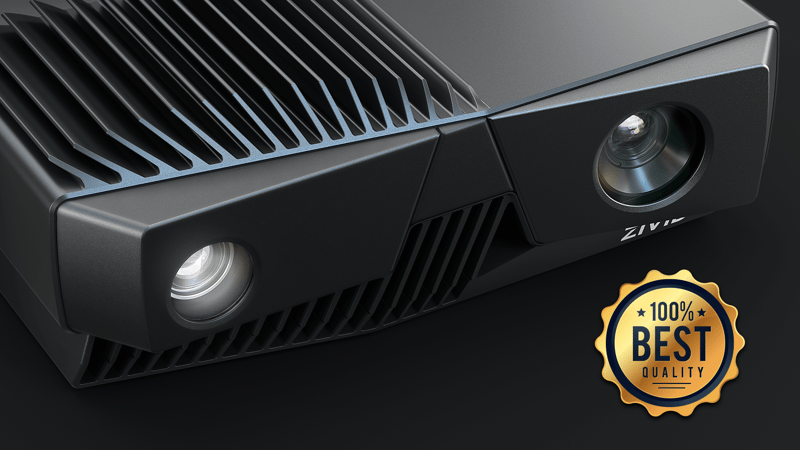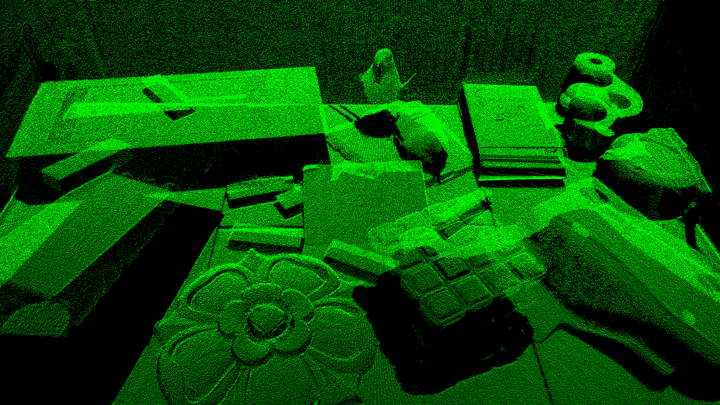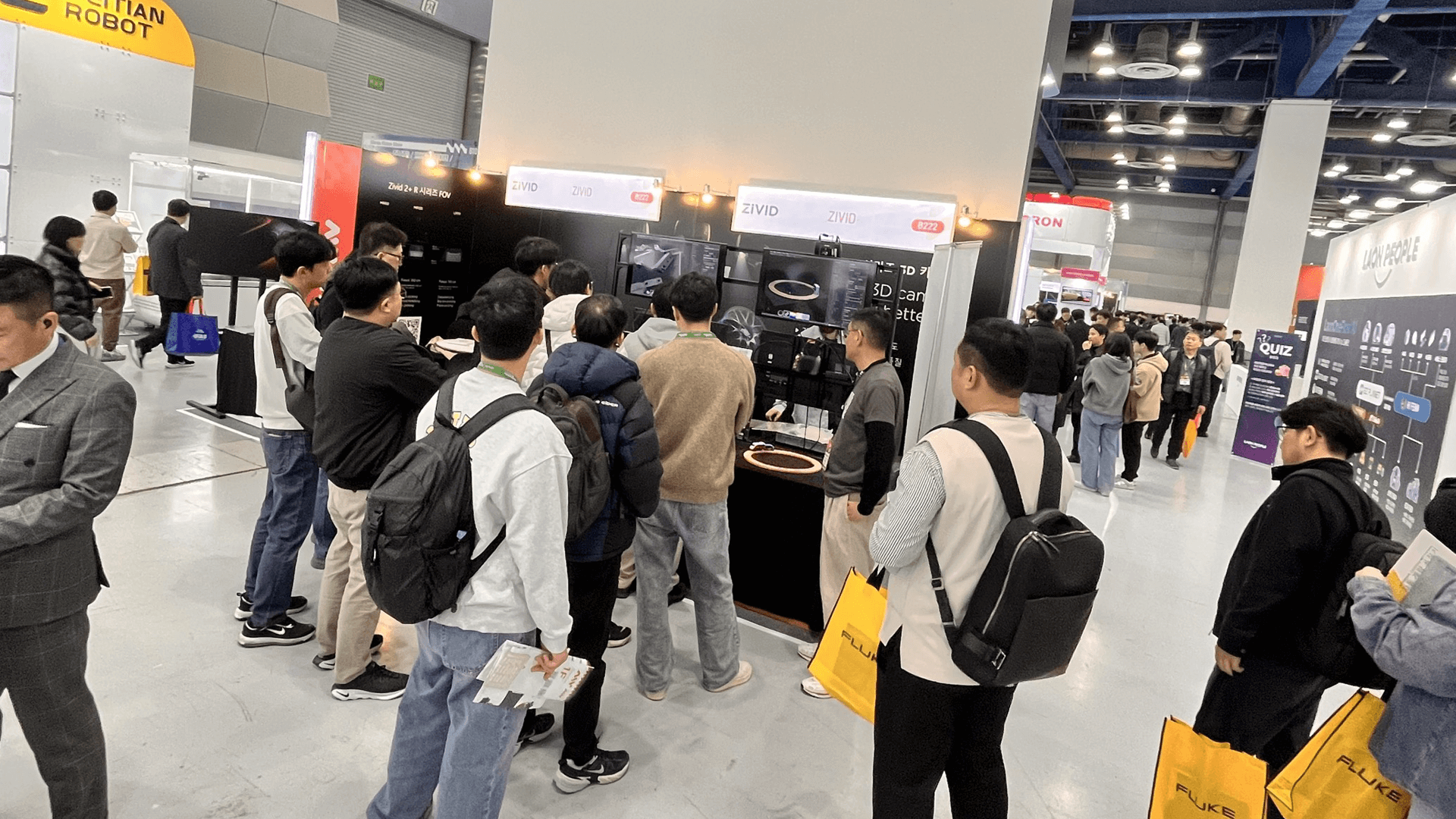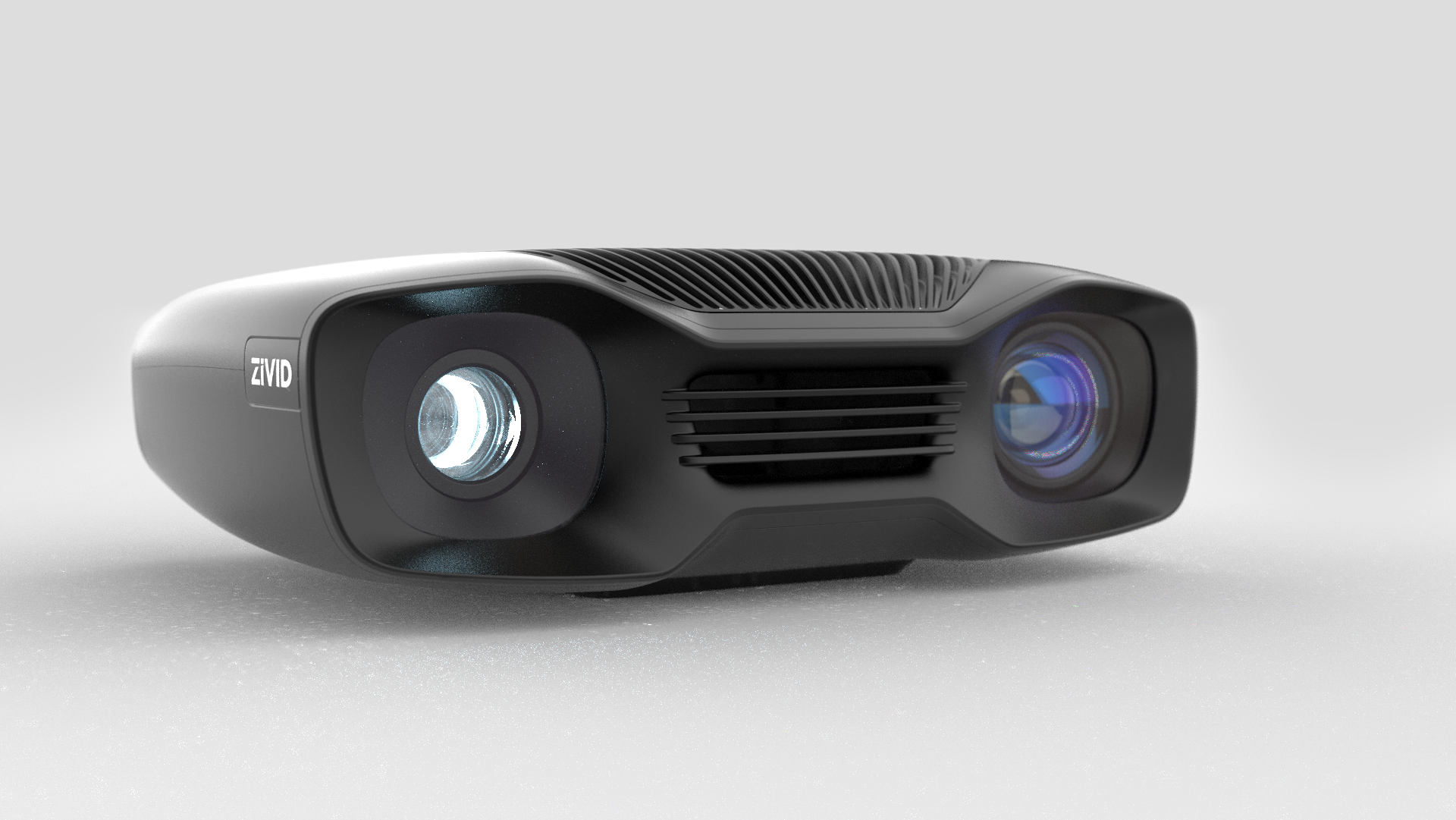We set the 3D standard for Quality of Data through innovation
Quality of Data
Quality of Data (QoD) is a term that distinguishes an excellent 3D camera from inferior technologies. QoD represents the significant innovations found in the Zivid One 3D camera, and Zivid's high-resolution technology offer the best QoD in the industry.
Every pixel in a 3D image from Zivid One provides a 3D coordinate (XYZ) along with a corresponding RGB color and a measure for the Quality of Data (QoD). The QoD value corresponds to the degree of uncertainty in the 3D measurement for each specific pixel.
Zivid defines the gold standard for QoD by providing:
- High absolute accuracy across the whole imaging sensor
- Accurate representation of shapes and forms, surface details, colors and texture
- Short baseline, which minimizes shadows and occlusions for both the camera and the projector
- Per-pixel processing: All analysis is done per pixel, without the need for analyzing spatial neighborhoods, eliminating block noise and providing true HD resolution
- High resolution data on any kind of surface, including shiny, reflective, translucent, dark and absorptive materials
- Smart patterns and software filters that eliminate noise and false points due to reflections and scattering

Fast and High Resolution 3D
3D data with extremely high depth resolution (0.1 mm at 600 mm working distance) is achieved by using innovative structured light technology. Compared to alternative technologies, structured light provides exceptionally high depth accuracy across a range of working distances. Time-coded structured light is considered as the optimal technology for industrial 3D vision applications where a high degree of accuracy is needed.
Zivid One has the same underlying technological principle used in high-end structured light 3D scanners, such as the ones typically used in the automotive and airspace industry. However, these scanners tend to be relatively slow and have a high cost, and they are typically not suited for in-line applications that require high speed operation.
Zivid One offers a unique combination of high depth resolution (0.1mm) and high speed (10Hz), which makes the camera the preferred solution for applications in robotics and machine vision. This allows accurate inline processing with no compromise between speed and resolution.
Optimal Baseline
The camera provides accurate representations of shapes, surface details and colors via several innovations both in hardware and software. Due to smart, adaptive patterns and high quality optics optimized for a short baseline, Zivid provides high accuracy both for short and long working distances with an extended depth-of-field. The 3D camera produces dense, high quality point clouds, with less occlusion, spanning from small boxes to Euro Pallet applications. From a mechanical design perspective, Zivid One overcomes thermal drift found in other cameras. Intelligent cooling and dynamic, thermally stable calibration enable crystal clear point clouds over the whole operating range.
3D HDR
Patent pending 3D HDR provides high quality data even for difficult surfaces and materials. Multiple 3D images are acquired, each with different iris, exposure time, and light output power. Due to the camera's high speed, multiple images with different f-stops can be acquired and fused together in less than a second. With several smart, adaptive filters, and projection pattern intelligence, measurement noise due to reflections or other surface light disturbances is detected and removed. Zivid One performs much better than other 3D cameras in challenging scenes with e.g. shiny or translucent objects, typically causing reflections and scattering.
Lastly, the camera uses pixel-wise processing. Intensities observed at each individual pixel at different times are used to establish correspondences between pixels in the camera and in the projector. Since only temporal information is used, all calculations are performed pixel-wise, avoiding the analysis of spatial neighborhoods. There is no block noise or loss in spatial resolution, despite Zivid being a color camera with a color filter array.
Color
Full color is another dimension required for precision and repeatability for automation and it differentiates Zivid One from other 3D cameras. Zivid One captures color and 3D with the same sensor chip. This reduces the need for complex multi-camera setups while adding the color dimension to high-definition 3D point clouds. Registration between the 3D and RGB images is not needed, as there is always a 1:1 correspondence between features in the RGB image and the corresponding 3D coordinates of those features.

Simplicity
For 3D vision to be widely adopted, a high degree of simplicity is required. Both during initial setup and in production environments, ease-of-use is crucial. Our simplicity DNA has been integrated in our design, allowing our customers to overcome the complexity of implementing 3D vision systems.
The steps required from unboxing to the successful acquisition of high-quality data have been minimized. Everything is bundled with the factory calibrated camera, which plugs directly into a processing unit. Image acquisition, smart filtering and HDR imaging is done by our API, producing calibrated XYZ and RGB data in millimeters out of the box. Integrators and developers can choose operating systems and development languages per experience level or requirement. There is no lock-in compared to existing solutions, and users are in full control of their design and data. Zivid One comes with APIs for the following languages:
- C++
- C# and other .NET languages
Thanks to the intuitive and easy to use APIs, minimal custom code is needed to generate point clouds. Out of the box the camera supports typical machine vision software such as HALCON, due to its conformance to the GenICam 3.0 Transport Layer.
Zivid Studio is a free software package and user interface that enables users to capture and analyze 3D images quickly. It provides direct access to 2D, 3D (XYZ), color (RGB), and depth views, and the possibility to explore and customize all the settings on the camera. Overall, Zivid One is a complete 3D vision package, integrated deeply with simplicity DNA to meet today's industry automation requirements.
Flexibility
Zivid produces high-quality data across a multitude of working distances. Users choose data formats, including XYZ, RGB, XYZ+RGB, and depth data. The camera is independent of operating system and programming language, so users have all the options to choose from. The cost of the overall system is minimized by using a modular approach with an external GPU. The result is a small, lightweight camera suitable for production line and robot automation without compromising the robot's payload capability.
Industry ready
One of the features that sets us apart, is the high Quality of Data (QoD) we offer across most surfaces and materials, as well as the high number of features integrated into a cost-efficient, lightweight, rugged, and award-winning IP65 protected design. Point clouds are generated in 100ms including acquisition and processing, which leaves ample time for the system to analyze the 3D data, e.g. to find objects and plan paths. Built-in intelligent cooling, thermal stability, and shock/vibration resistance make Zivid One optimal for factory floors and for all sorts of demanding applications.
The sum of our innovations results in dense and high-quality point clouds in above full HD with exceptionally high depth resolution.
You May Also Like
These Related Stories

Showcasing Zivid's Industrial 3D Camera Solutions at the Korea Vision Show (AW2025)

Zivid Developer Series Webinar: Making 3D captures easy
.jpeg)

